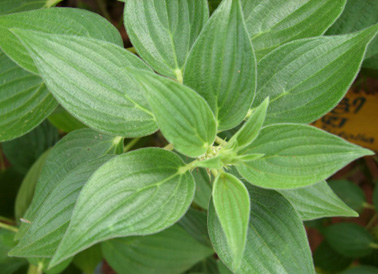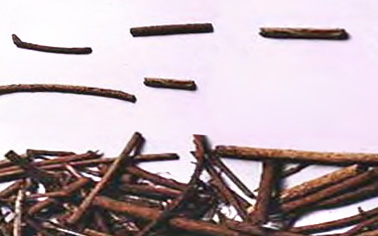|
Botanical Name:
Rubia cordifolia
Manjishta consists of dried stem of Rubia cordifolia Linn,
Family Rubiaceae
Common Name(s) in English & Indian Languages
Sanskrit: Yojnavalli, Vastrarajini, Rakta
Assamese: Phuvva
Bengali: Manjistha, Manjith
English: Indian Maddar
Guajarati: Manjitha
Hindi: Manjitha, Manjit
Kannada: Manjustha
Malayalam: Manjatti
Marathi: Manjihtha
Punjabi: Manjistha, Manjit
Tamil: Manjitte
Telugu: Manjishtha
Urdu: Majeeth
Botanical description:
Twining perennial herbaceous prickly creeper or climber upto
10m long. Stems angled, short spines along the edges. Leaves
whorled, ovate to ovate-cordate, with 5 nerves from the
base, 4, two of them stipules, 2-4 cm long, 1-2 cm wide,
short spines on the ribs of the back side and margins.
Flowers in terminal cyme, pale yellow, small, 3.5 cm in
diameter, 5-merous; corolla slightly campanulate. Fruit
fleshy, black; seeds few.
Parts used:
Stem
Major chemical constituent:
Glycosides
Therapeutic uses:
• Disease of female genital tract (Yoni roga)
• Eye disease (Aksi Roga)
• Inflammation due to kapha dosa (Slesmaja sotha)
• Diarrhoea with blood (Raktatisara)
• Diseases of blood (Kustha)
• Erysepales (Visarpa)
• Increased frequency and turbidity of urine (Prameha)
• Snake poisoning (Sarpavisa)
• Piles (Arsa)
• Dark shade on face due to stress and excessive exercise
(Vyanga) |
|


|
|
|



